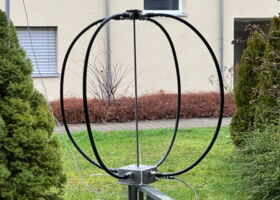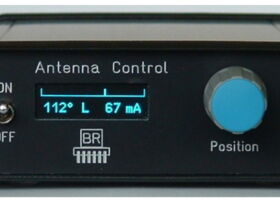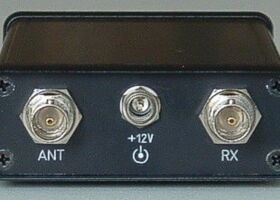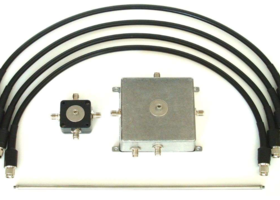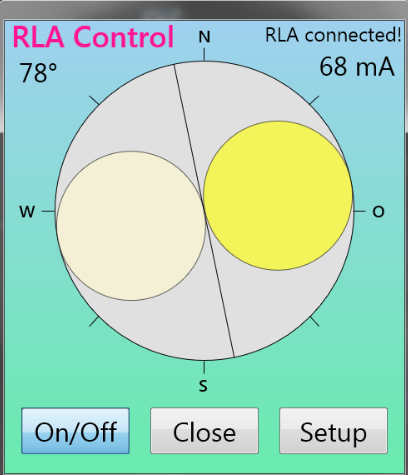
The RLA4G is a cross loop receiving antenna for fixed outdoor installation. It operates broadband as a non-tuned active antenna with an integrated amplifier. The power is supplied via the HF cable. The two loops consist of coaxial cables for the symmetrical control of two differential current amplifiers with a low- impedance input. The utilization of the latest components in the two amplifier branches guarantees very low intrinsic noise values and high inter-modulation resistance. The two reception loops are arranged at an angle of 90° to one another. By adjusting the amplifiers, an electronic rotation of the receiving direction is possible. The outer jacket of the antenna elements is grounded on the amplifier housing and shields the actual loops (inner conductor) against interference radiation.
The amplifier is installed in a sealed aluminum housing. The reception diagram is then eight-shaped in the horizontal (bidirectional with 2 wide reception lobes and two sharp zeros).
The RLA4G is not suitable for direction finding. The absolute deviation of the setting compared to the actual reception direction can be several 10°s. The purpose of electronic rotatability is to ensure maximum suppression of interference signals and the cleanest possible reception of useful signals.
Power supply to the RLA4G is only possible via the HF cable ("remote power supply")
RAP1
The RAP1 is an active (with amplifier) preselector for radio receivers. It provides preselection to relieve the RX from high sum voltages from wideband antennas. Receivers without sufficient selectivity and input power tolerance thus generate less IM distortion, direct sampling devices ("SDR") require less attenuation. This preselector can also be controlled from the same device as the RLA4GS antenna. Further information after testing the device.


